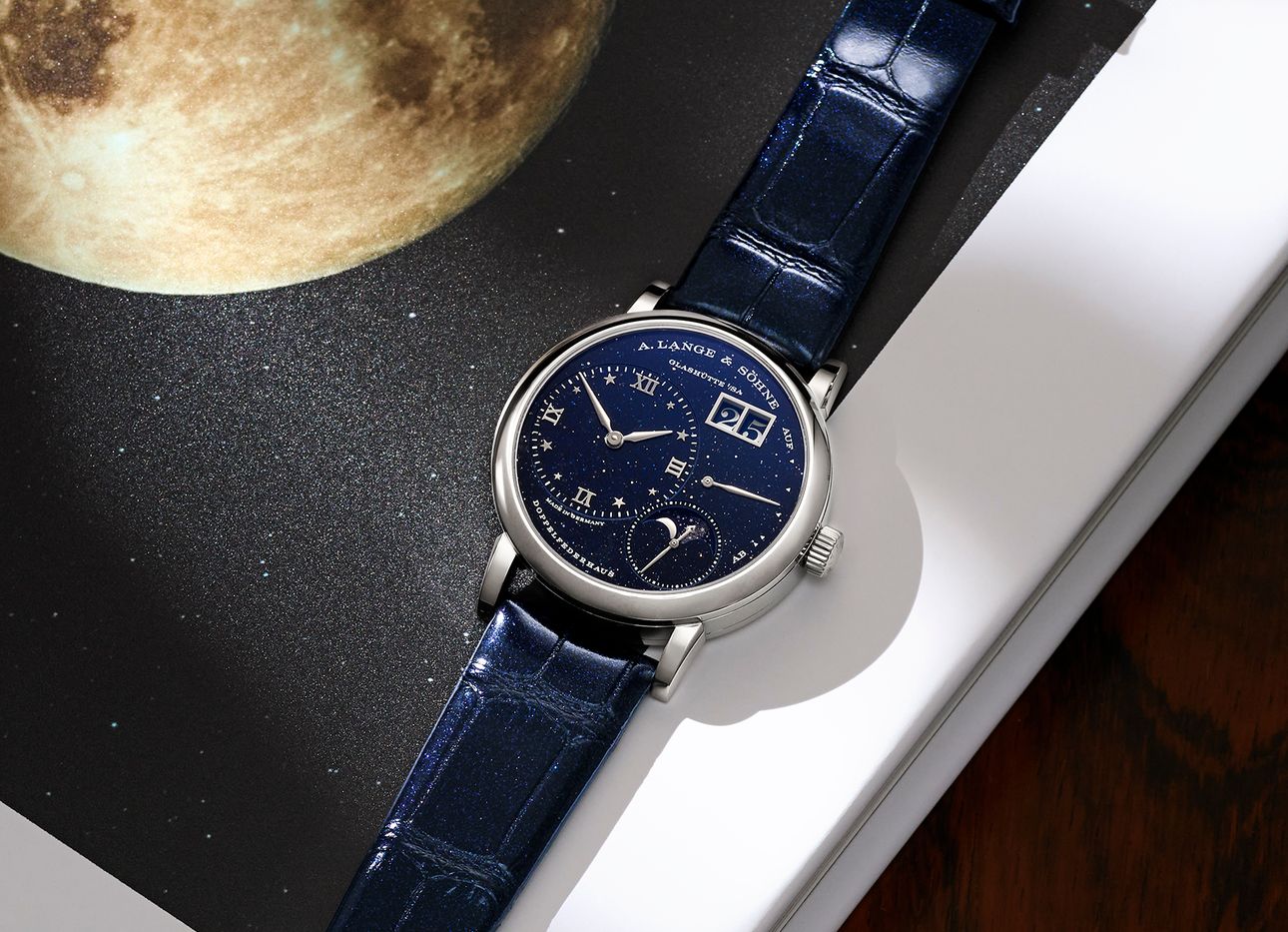
A. Lange & Söhne’s Latest Timepieces Transform a Wrist Into a Site of Wonder
Since ancient times, people have looked to the sun, moon, and stars to create a sense of rhythm and order in their lives. It’s what led the Greeks to invent the Antikythera mechanism, a 2,000-year-old handheld device that predicted astronomical events, such as the movement of the planets and lunar eclipses, and formed the foundation for today’s moonphase watch complication, which portrays our satellite’s shifting shape. Many horologists have mastered the functionality, but few have perfected it with such precision and ingenuity as the legendary German watchmaker A. Lange & Söhne, which has been re-envisioning moonphase timepieces over the past three decades and has 13 models in its current collection. Its recently unveiled Little Lange 1 Moon Phase watch elevates the poetic movement with a copper-flecked, midnight-blue silver dial that shimmers like the night sky, and depicts, beneath the brand’s signature outsize date, the appearance of the moon as it waxes and wanes. Housed within a white-gold case with a diamond-encrusted bezel, the hand-assembled watch’s lunar display will remain accurate for 122.6 years (should anyone live long enough to test it out).
Serious watch enthusiasts typically wait an entire year for A. Lange & Söhne’s new releases, many of which are produced in limited runs. Other just-debuted timepieces include the Lange 1 Perpetual Calendar, released in an edition of 150 and powered by a 621-part movement with a peripheral month ring that’s seamlessly integrated into a silver-gray or solid pink-gold dial. There’s also an upgraded version of the Triple Split, the world’s only mechanical split-seconds chronograph, which allows for multi-hour comparative time measurements, issued in an edition of 100 with a 18-karat pink-gold case and an indigo-hued dial. Wearing a device that tracks time in various ways at once can transform a wrist into a site of wonder—similar to what the Greeks likely experienced when beholding the celestial bodies above.